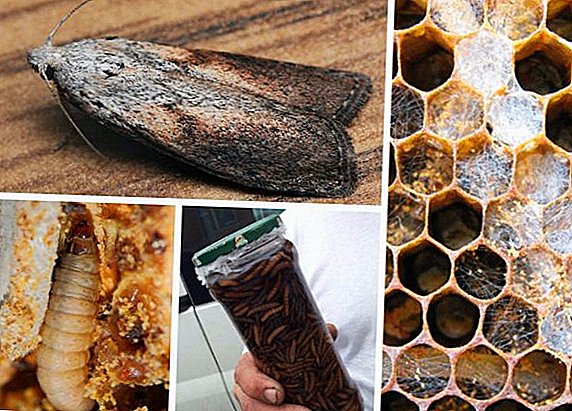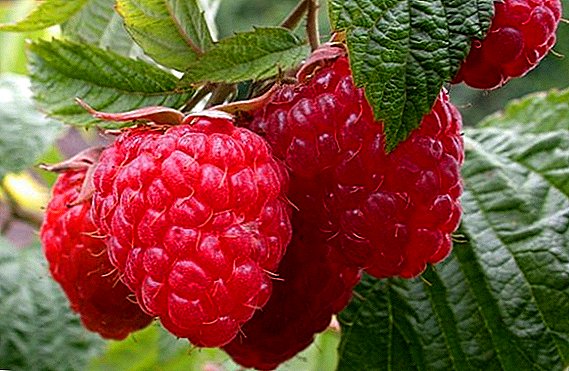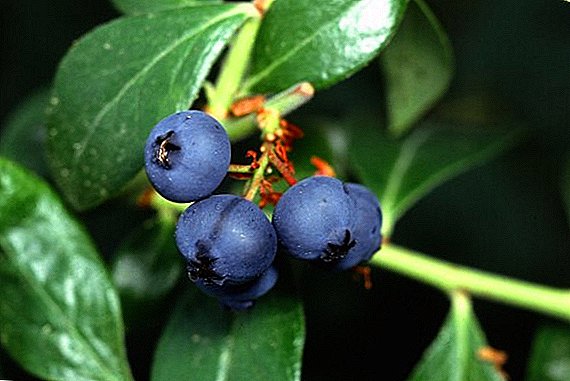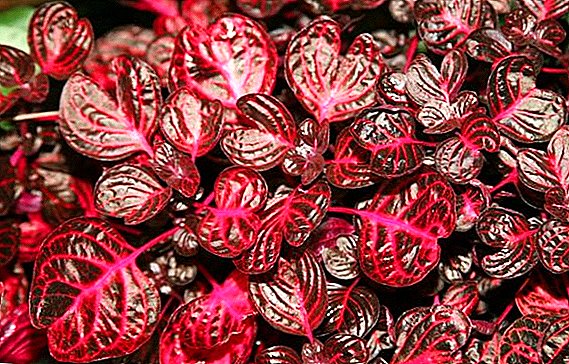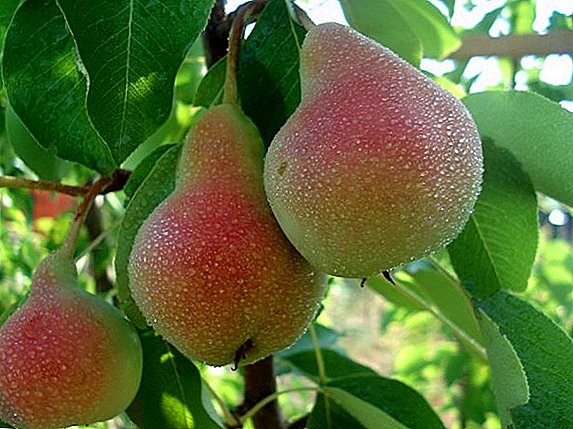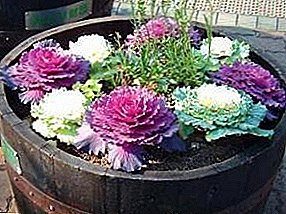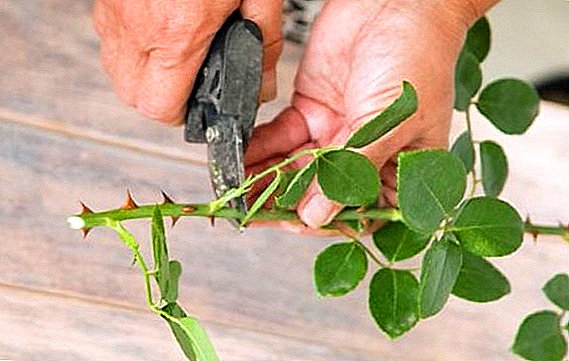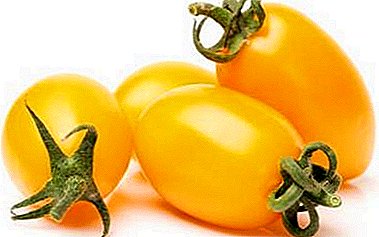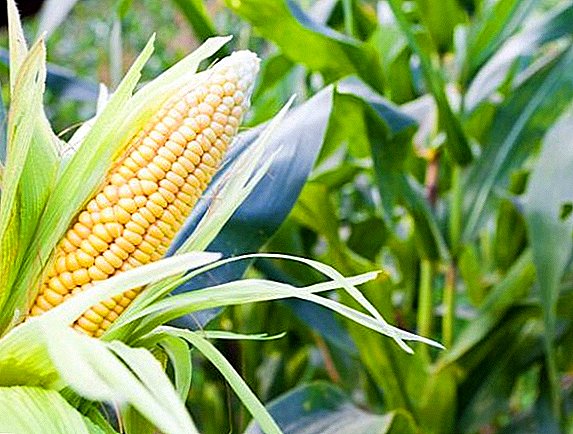 Corn is a popular and sought-after crop from domestic farmers. An important issue in its cultivation is protection against clogging of crops. The answer to this can be considered the use of herbicides.
Corn is a popular and sought-after crop from domestic farmers. An important issue in its cultivation is protection against clogging of crops. The answer to this can be considered the use of herbicides.
Basic Corn Growing Rules
Corn for proper growth requires the following conditions:
- temperature 12-25 ° C;
- air humidity not less than 30%;
- soil pH 5.5-7.0;
- light day is not shorter than 12 hours.
 For fertilizing and fertilizers use products containing nitrogen, phosphorus, potassium. Processing begins after planting and continue until the formation of grain. Potash fertilizers can be used throughout the growing season.
For fertilizing and fertilizers use products containing nitrogen, phosphorus, potassium. Processing begins after planting and continue until the formation of grain. Potash fertilizers can be used throughout the growing season.For feeding, use different types of potash comfort: potassium chloride, potassium sulfate, potassium salt, potassium nitrate, potassium magnesia, wood ash.
Watering is rare. But the water should penetrate to a depth of 15 cm. Special attention to soil moisture during the period of laying and ripening cobs. 
Purpose of herbicides for culture
Great work on the destruction of weeds is carried out before sowing by disking and before the stage of emergence of shoots - by harrowing. When the plants have already gone to growth the best means are herbicides - preparations containing harmful substances to the flora. Herbicide treatment of the fields does not allow the weeds to crush the first shoots of corn.
Did you know? Corn gets on well with all crops, except tomatoes.There are two types of such drugs:
- Total action - completely clean the area from vegetation. Used in the primary processing of land.
- Selective action - kill plants of a certain type only.
It is on the basis of the last species that various means are created for cleaning the sown areas of corn.
Important! All herbicides are poisonous preparations. They must be applied very carefully and in personal protective equipment. They must be applied in accordance with the instructions.The destruction of weeds in the later stages of growth by mechanical means is associated with the danger of damaging the root system.

Did you know? For successful cultivation, it should be remembered that corn is unable to compete with cereal weeds in the early stages of development. Therefore, the use of herbicides for maize, especially the introduction of ground (pre-emergence) funds is of great importance.
The best drugs
So, we decided on the need to apply herbicides. Now we will understand what types it is better to use.
Pre-emergence
The most effective and powerful drugs:
- "Kratos" - soil herbicide for corn, aimed at the destruction of weeds. Consists of acetochlor emulsion. The active substance enters through the shoots of weeds. Inhibits protein synthesis. Begins to act immediately after making and until the end of the growing season. Treats moderate toxic (ІІІ class);
- "Harnes" - contact selective action, for pre-emergence protection. Well suited to combat all types of weeds. The active ingredient is acetochlor, in the form of an emulsion 900 g / l;
- "Acenit A" - due to the content of the antidote, shows a good result against various types of weeds;
- "Chaser P" - soil preparation against annual dicotyledonous weeds. Recommended for use before germination and after the appearance of 2-3 sheets.

Post-emergence
The widest range of drugs refers specifically to post-emergence species:
- "Dialen Super" - post-emergence herbicide for corn, used in the phase of 3-5 sheets. Directed against annual and perennial dicotyledonous plants, including those resistant to other herbicides;
- "Titus" - means for control of perennial and annual cereal, as well as two-long weeds. It can be used during the long growth phase - from 1 to 7 leaves;
- "Meister Power" - effective control of all types of weeds, regardless of climate and soil. Effective against the second wave of weeds. Belongs to the second class of hazard (highly toxic).
- "Esteron" - used in the phase of 3-5 leaves of culture. Aimed at combating dicotyledons.
How to use herbicides for corn
The main rule of application of such means is the strict and accurate execution of instructions, the observance of concentration. In this case, the risk of causing harm to health and the environment is minimal. The choice of the drug is also influenced by the type of weeds affecting crops.  If spraying is chosen as a method for treating corn, the concentration should be increased - to minimize the effects of rain and wind.
If spraying is chosen as a method for treating corn, the concentration should be increased - to minimize the effects of rain and wind.
Did you know? As a result of wind and other atmospheric phenomena, about 30% of the active drug remains on plants.If the tool is planned to be applied directly to the soil, the solution is mixed with the top layer of soil.
When spraying, you should carefully consider the condition of the sprayer. Malfunction of the equipment violates the uniformity of treatment and the effect of drugs.
Some active ingredients are sensitive to soil moisture. Therefore, precipitation control becomes an important part of the preparation for tillage. Processing of corn with herbicides is carried out at a temperature not higher than 25 ° C. At a higher temperature, the plants themselves become affected, and the health of workers is threatened. Compliance with the rules of labor protection is extremely necessary when making drugs. Work should be carried out only in special clothes, with the use of respiratory protection and rubber gloves. Be careful when making drugs. Remember that they can be carried by the wind and there is a high risk of poison entering other fields.
Important! The introduction of herbicides is strictly prohibited during the formation of cobs. The deadline for the last treatment is one month before the harvest.These drugs are the most important plant protection products. A large number of various drugs allows you to choose the best tool for your field and conditions. Low toxicity, high efficiency, variety of brands - All this allows the active use of herbicides for high-quality plant protection.


